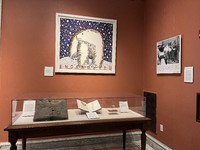-
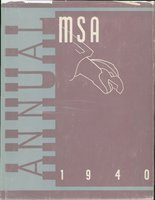
Logo Design, 1940
-
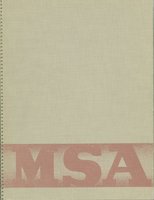
Logo Design, 1932-1937
-
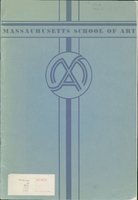
Logo Design, 1932-1937
-
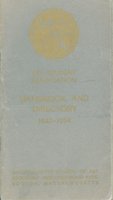
Logo Design, 1932-1937
-
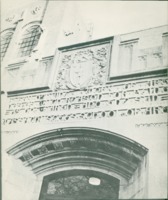
-
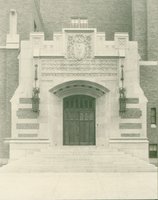
Massachusetts state seal over main entry to the Longwood Building.
-
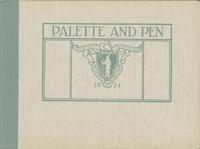
Logo Design, 1924-1931
-
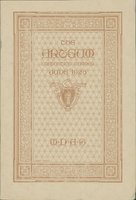
1923 Logo Design
-
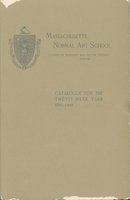
Logo Design, 1900-1923
-
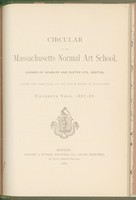
Logo Design, 1898-1899
-
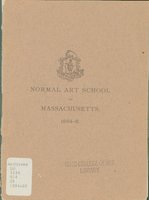
Logo Design, 1881-1884
-
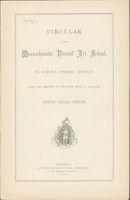
Logo Design, 1878-1880
-
The Studio for Interrelated Media (SIM) was founded in 1969 by MassArt
faculty member Harris Barron, class of 1954 (Ceramic Design), who
taught from 1963 until his retirement in 1988. Influenced by the rise
of performance art in the 1960’s, SIM was one of the first-of-its-kind
interdisciplinary, idea-focused, and non-media specific programs.
SIM students explore their ideas through light, sound, digital media,
and performance with a focus on experimentation, collaboration, and
civic engagement. This makes much of the artwork produced meant to
be experienced in the moment and ephemeral.
The precursor to SIM at MCA was ZONE (1968-1972), a visual theater
troupe founded by Barron, his wife Ros, and their former studio assistant,
Allen Finneran. In 1972, MassArt created the Media and Performing Arts
Department and Harris served as its first chair. With the creation of the
department came the opportunity for students to major in SIM and the
program entered its first stage of real growth.
-
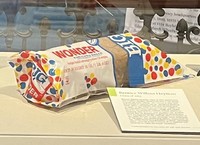
Bernice Willens Heyman, class of 1952 (Advertising and Product Design),
became the first in her family to graduate from college. She moved to
New York and worked in commercial art, designing greeting cards, fabric,
newspaper ads, and painting faces on dolls. In the 1970s she earned
her master’s in Art Education from Lehman College and would work
for the Hendrick Hudson School District in Ossining, New York for over
25 years. Her artwork would also be displayed in galleries around New
York throughout her life. Heyman was a co-creator of the 1960s Wonder
Bread campaign while employed at Ted Bates, the advertising agency
responsible for the “Helps Build Strong Bodies 12 Ways” campaign,
which referred to the inclusion of 12 vitamins and minerals to make
the bread “healthier.”
-

The Graphic Workshop began in 1970 as a response to the national
student strike at Kent State University and Jackson State University,
where six students were killed while protesting the U.S. invasion of
Cambodia. Between 1970 and 1992 the artists of the Graphic Workshop
created hundreds of silkscreen posters. Many were about politics, war,
racism, public health and endangered species. Faculty member and
co-founder Rob Moore described the Graphic Workshop as a “visual
propaganda unit” supported by “blood, sweat, and friendship.”
-
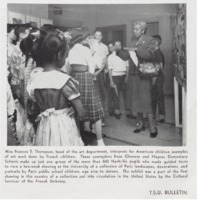
Frances Euphemia Thompson, class of 1923, built a 47-year career
teaching art to young Black women and men who would bring art
instruction to the segregated schools of rural Tennessee. Thompson
attended high school at Tennessee Agricultural and Industrial State
Normal School (now Tennessee State University) where she met her
mentor, Olive Gorane Taliaferro, a Massachusetts Normal Art School
alumna, Class of 1915. Taliaferro would influence Thompson to attend
MNAS, and Thompson would earn her diploma and later, a bachelor’s
degree from Massachusetts School of Art. She received her Master of
Arts in Teaching from Radcliffe in 1945.
In 1943, the Tennessee Department of Education published her book
Art in the Elementary Schools: A Manual for Teachers, to help teachers
create art programs in segregated schools. She taught at TSU from 1923
to 1969. TSU’s seal was designed by Thompson, as were many of the
bas-reliefs decorating several of the school’s buildings. Thomson’s other
notable artwork includes drawings, oil paintings, and murals.
-
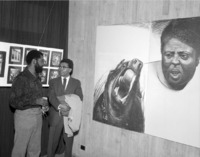
-
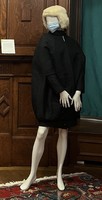
Shirley Willett, class of 1955 (Fashion Design and Illustration), is known
for producing affordable, high-quality pieces through rigorous pattern
engineering. Willett returned to MassArt as a faculty member, and served
as Chair of the Fashion Design Department from 1966 to 1968. In 2018,
she wrote Past, Present, Future: Fashion Memoir, 70 Years of Design,
Education, Engineering, Manufacturing and Technology. Displayed on the
mannequin is Willett’s 1968 ball coat, helmet hat, and boot-tops.
-
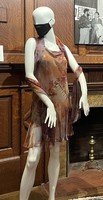
One of Boston’s premier fashion designers was Alfred Fiandaca, class of
1958 (Painting and Illustration). He returned to the College in the 1960s
to teach in the Fashion Design Department, soon after establishing his
Newbury Street atelier. He hosted MassArt interns at his workrooms in
Boston, New York and Palm Beach. His designs were worn by celebrities
and public figures to the Academy Awards, the Boston Ballet, on screen,
and everywhere in between. Notable customers included Audrey
Hepburn, Julie Andrews, Louise Fletcher, Joan Kennedy, Nancy Reagan,
and Ann Romney. The piece displayed is a silk chiffon dress and shawl
created by Fiandaca in the 1990s.
-
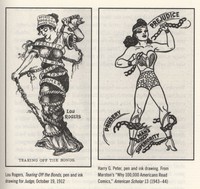
Annie “Lou” Rogers earned her certificate in Elementary Drawing and Design in 1900 from Massachusetts Normal Art School. She began her career submitting work as “Lou Rogers” to get around the barrier of sexism at the time. She became a successful cartoonist, with work featured in publications such as Judge magazine, New York Call, Woman’s Journal, and Birth Control Review. Throughout her life, Rogers was clear in her support of “radical” activism efforts, such as feminism, socialism, and women’s suffrage, with the latter being the most notable topic in her published cartoon work. While working as a staff artist at Judge, Rogers met illustrator H. G. Peter. Her feminist-slanting work inspired Peter to develop what would become the Wonder Woman cartoon, and it is because of Rogers’ focus on depicting women freeing themselves from existing social bondage.
-
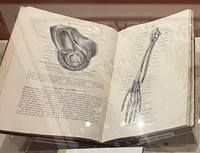
Hamlet Frederick Aitken earned his Certificate in Elementary Drawing in 1895, and became a successful artist and medical illustrator. He worked with leading figures of American surgery and anatomy, including Harvard Medical School anatomy professor John Warren. Aitken illustrated more than 400 depictions of medical procedures for Warren’s Handbook of Anatomy to accompany descriptions of dissections. Their collaboration ended with a topographical atlas and handbook for dissection to train generations of doctors around the globe. Harvard University Press published five editions of the Handbook of Anatomy between 1930 and 1972, with the 1944 edition displayed here.
In the spirit of the Aitken/Warren partnership, in 2022 MassArt embarked on an initiative with Brigham and Women’s Hospital called the Medical Inclusion and Diversity Art Program. It is aimed at promoting diversity and representation of all kinds (race, ethnicity, gender identity, ability, and socioeconomic status) in the illustrations and visual artwork used in medical books, scientific literature, training, and patient engagement activities.
-
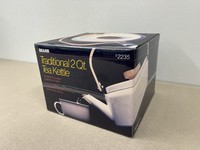
Robert Gersin, class of 1951 (Teacher Education) created award-winning
designs for AT&T, Citibank, Corning Glass, General Electric, Timex,
and the Xerox Corporation, among others. In 1984, his firm conceived
and executed the design and communication system in use by Sears
Roebuck, including the ubiquitous Sears logo. A former powerhouse
legacy retail brand in the United States, the Sears’ logo is easily
recognizable to this day.
-
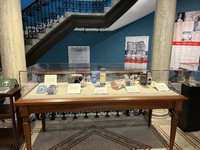
-
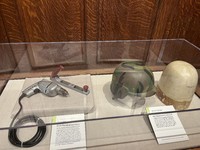
-
